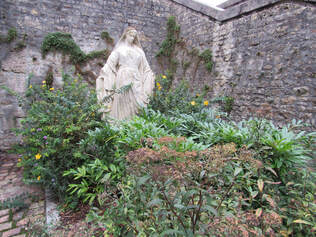 The Girl Who Escaped from Auschwitz, by Ellie Midwood, published by Bookouture in 2021, is a remarkable story. It takes place in the Auschwitz/Birkenau concentration/extermination camp in southern Poland, in 1943 and 1944, and is, of all things, a love story. It is also a true story. Mala Zimetbaum is a young Jewish woman from Antwerp, Belgium. She is an assimilated Jew and grew up under the desire of her father that she be independent, educated, and self-sufficient. She became all of those while also embracing the youth groups that sponsored military-like training, becoming a skilled fighter by the time she’s in her twenties. When the Nazis invade Belgium after swallowing up the other European countries, Mala finds herself relying on those skills as she is swept up, taken to a holding camp in Malines, shoved onto a cattle train, and then spilled out onto the arrival ramp at Auschwitz. They tattoo the number 19880 into her skin. Fortunately, the SS doctors sorting the prisoners are looking for people with a good knowledge of languages and Mala fluently speaks six. She is declared to be an essential inmate, meaning that she got a regular shower rather than one with gas. A year and a half later, she has established herself as a valued office assistant and a camp “runner”, someone who takes information, messages, orders, and requests to administrators and officials throughout the Auschwitz/Birkenau complex. Edek Galinski is a young man from Poland, the son of a plumber. He is not Jewish at all, but was taken prisoner by Hitler because he was young, healthy, and would have made a good Polish soldier. To keep him from becoming one, in June of 1940, Edek is snatched from a maritime training academy, labeled a political prisoner, and sentenced to hard labor at Auschwitz; it was for containing the Poles that the camp was originally built. His tattooed number was one of the earliest – 531. By 1943, he and his friend, Wieslaw Kielar, have spent the three and a half years at Auschwitz. It is by chance that Mala and Edek meet. Edek and Wieslaw have developed an escape plan, foreseeing that everyone in the camp will be killed if the Nazis think that the Russians will overrun the complex. Mala becomes a key figure in helping procure a permission paper that is required to fool the camp guards. It is while working together that they fall in love, which, to Edek, means that Mala must escape with them. I like reading history books but also love historical fiction. This story and the detailed descriptions of the activities, personalities, and surroundings put together a lot of the information that I’ve learned about the Nazi camps. It treated me to a third dimension – the dimension of first-person descriptions of actual experiences – to my backlog of facts. At the end of the book, the author notes the many firsthand accounts of Holocaust survivors and witnesses she used to build the story. For example, Wieslaw Kielar, who never got to attempt the escape, survived Auschwitz and became a filmmaker and author. He wrote detailed information about Edek and Mala and their escape in his book Anus Mundi. If you visit Auschwitz, there are two locks of hair from Mala and Edek that Kielar donated to the museum. Similarly, many of the characters in Midwood’s story have real counterparts in H. Langbein’s study People in Auschwitz. She stayed obsessively true to the people, their roles, and their contexts. I appreciate Midwood characterizing sympathetic German soldiers. Members of the Third Reich are typically lumped together as evil incarnate, but many Nazi officers and soldiers did not like Hitler, could not understand the murdering of hundreds of thousands of prisoners, and were horrified at how prisoners were brutally treated. One key SS officer in the story subverts his Nazi principles, helps ease the horror of living at Auschwitz for prisoners, and puts himself in great danger by helping Edek. He didn’t earn a lot of sympathy from me, but it was interesting to see him struggle with his guilt. It was good to find a sense of scale of the operations: the prisoner population alone could have made up a fair-sized city. More than a million prisoners were murdered there, but there were tens of thousands of prisoners living daily in the two camps. Trains with thousands of new captives arrived every day; up to five thousand prisoners a day were gassed, burned, or buried on a routine basis, with the camp prisoners operating the gas chambers, taking out the bodies, operating the crematoriums and burial pits, sorting the clothes, and even taking out any gold teeth and fillings. Everyday living involved carpenters, electricians, plumbers, painters, tilers, builders, bricklayers, cooks, clerks, interpreters, janitors, and all sorts of crafts people, some of whom were not prisoners, but were from nearby towns. It should also not go unnoticed how much was involved in maintaining records, files, job assignments, and daily reports, the work again being done by prisoners. Imagine no copiers, no fax machines, no electronic messaging, no means of easy communication, no public transportation. It was all peoplepower, involving thousands, all working in the clouds of ashes belched out of the chimneys of the crematorium. Midwood gives a realistic portrayal of the movement of illegal or forbidden items through the prison population, like food and medicine, as well as the miserable lives the German soldiers must have led. There were organized resistance groups within the population that gathered, smuggled, built, and hid weapons in anticipation of making a revolt against the soldiers and guards. Prisoners who worked at higher levels in the organized administration of the camp, like Mala, could influence the quality of life for individual prisoners, regardless of whether they were Jews, Poles, Czechs, Hungarians, German political prisoners, or even the more than 10,000 Soviet prisoners of war. Because of it, she probably saved thousands. The preparations for the escape, as well as the description of the escape itself, are based on testimonies. It shows the courage, fear, and passionate longing for individual freedom of those who refused to abandon hope. Mala and Edek emerge as heroes of Auschwitz and what they did provided impetus for the internal rebellion that soon followed. It’s a remarkable story and worth reading.
0 Comments
Leave a Reply. |
AuthorDon Willerton has been a reader all his life and yearns to write words like the authors he has read. He's working hard at it and invites others to share their experiences. |

 RSS Feed
RSS Feed